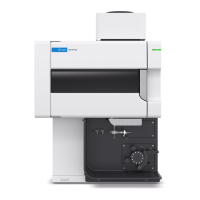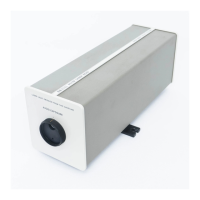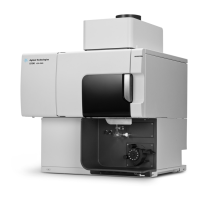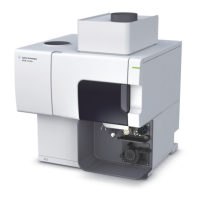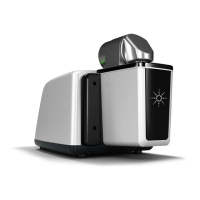Chemical Ionization Theory A
5975 Series MSD Operation Manual for MassHunter 185
Negative CI Theory
Negative chemical ionization (NCI) is performed with analyzer voltage
polarities reversed to select negative ions. There are several chemical
mechanisms for NCI. Not all mechanisms provide the dramatic increases in
sensitivity often associated with NCI. The four most common mechanisms
(reactions) are:
• Electron capture
• Dissociative electron capture
• Ion pair formation
• Ion-molecule reactions
In all of the cases except the ion-molecule reactions, the reagent gas serves a
function different from the function it serves in PCI. In NCI, the reagent gas is
often referred to as the buffer gas. When the reagent gas is bombarded with
high energy electrons from the filament, the following reaction occurs:
Reagent gas + e
–
(230eV)
Reagent ions + e
–
(thermal)
If the reagent gas is methane (Figure 37), the reaction is:
CH
4
+ e
–
(230eV)
CH
4
+
+ 2e
–
(thermal)
The thermal electrons have lower energy levels than the electrons from the
filament. It is these thermal electrons that react with the sample molecules.
There are no negative reagent gas ions formed. This prevents the kind of
background that is seen in PCI mode and is the reason for the much lower
detection limits of NCI. The products of NCI can only be detected when the
MSD is operating in negative ion mode. This operating mode reverses the
polarity of all the analyzer voltages.
Carbon dioxide is often used as a buffer gas in NCI. It has obvious cost,
availability, and safety advantages over other gases.
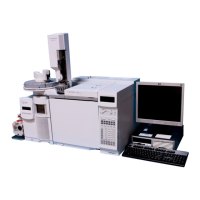
